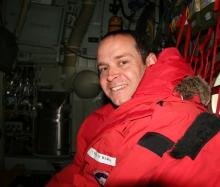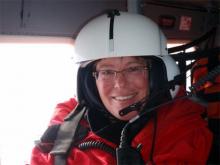Dissolved Organic Matter in Antarctica
What Are They Doing?
An interdisciplinary research team collected water and ice cores to study the microbial communities found in the Transantarctic Mountains and the McMurdo Dry Valleys in Antarctica. Once believed to be devoid of life, closer observations of glacial ice have revealed microhabitats teeming with life. In these extreme conditions, microorganisms live in the liquid water phases of ice, and they depend upon dissolved organic matter (DOM) in the water for food and nutrients. Although DOM is found in every environment and is an important component of the global carbon cycle, we still need more basic information about it, such as how DOM forms and changes over time.
The research team compared the microbes and DOM in two different types of Antarctic streams: normal streams that flow out of a lake and a supraglacial stream that forms on top of a glacier each summer. Because the supraglacial stream forms each year from a relatively clean surface, the investigators had a unique chance to study how the microbial community and DOM start from scratch and develop over time. By isolating the DOM and studying its chemical and structural composition, the team learned more about how the contributions and interactions between microbes and the DOM pool are different in the two different types of streams.
In addition, it is not well known how DOM and carbon locked in glacial ice will respond to climate change. The connection between ice-bound DOM and climate change is important because frozen environments comprise 25% of the Earth's surface, potentially releasing additional carbon into the atmosphere as global temperatures warm.






